Penicuik Estate, situated to the south-west of Edinburgh at the foot of the Pentlands, has been owned by the Clerk family since the middle of the 17th century. In 1654 the merchant John Clerk (1611-1674), who had made his fortune in Paris, purchased the Estate with the existing house Newbiggin from the heirs of Margaret Scott, the Countess of Eglinton. In 1647 John Clerk married Mary Gray, fourth daughter of Sir William Gray of Pittendrum by whom he had five sons and five daughters. He married for a second time in 1670 to Elizabeth Johnston, and upon his death he was succeeded by his eldest son, John Clerk, who became the 1st Baronet in 1679.
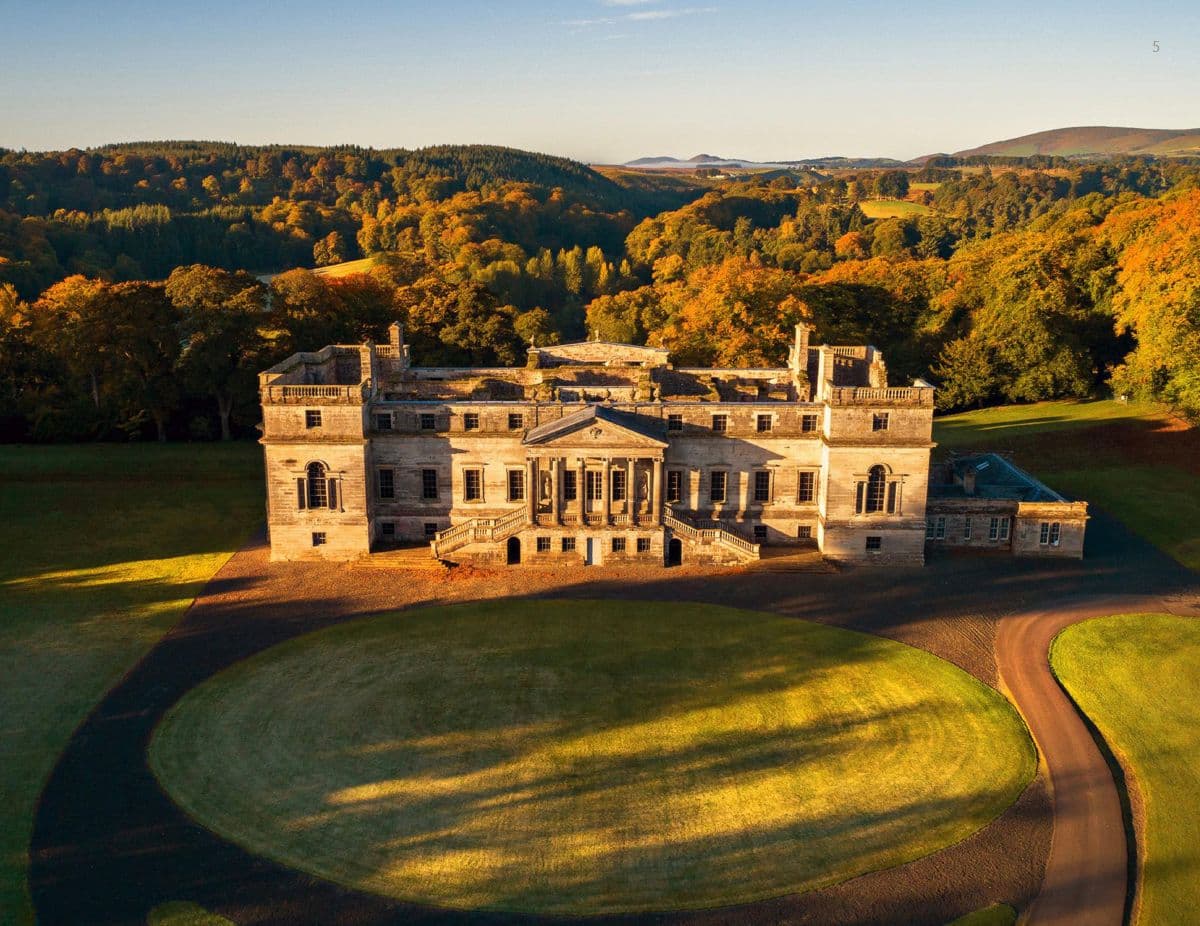
Select Property from Penicuik House, Midlothian
11 March 2024
Douglas Girton
Sir John served as a shire commissioner for Edinburghshire in the Scottish Parliament from 1690-1702, and in addition to Penicuik Estate, in 1700 he acquired the lands and Barony of Lasswade, to the south of Edinburgh. He was married twice, first to Elizabeth Henderson by whom he had three sons and three daughters, and second to Christian, daughter of the Reverend James Kilpatrick by whom he had a further four sons and four daughters. He died in 1722 and was succeeded by his son, also John, the second Baronet.
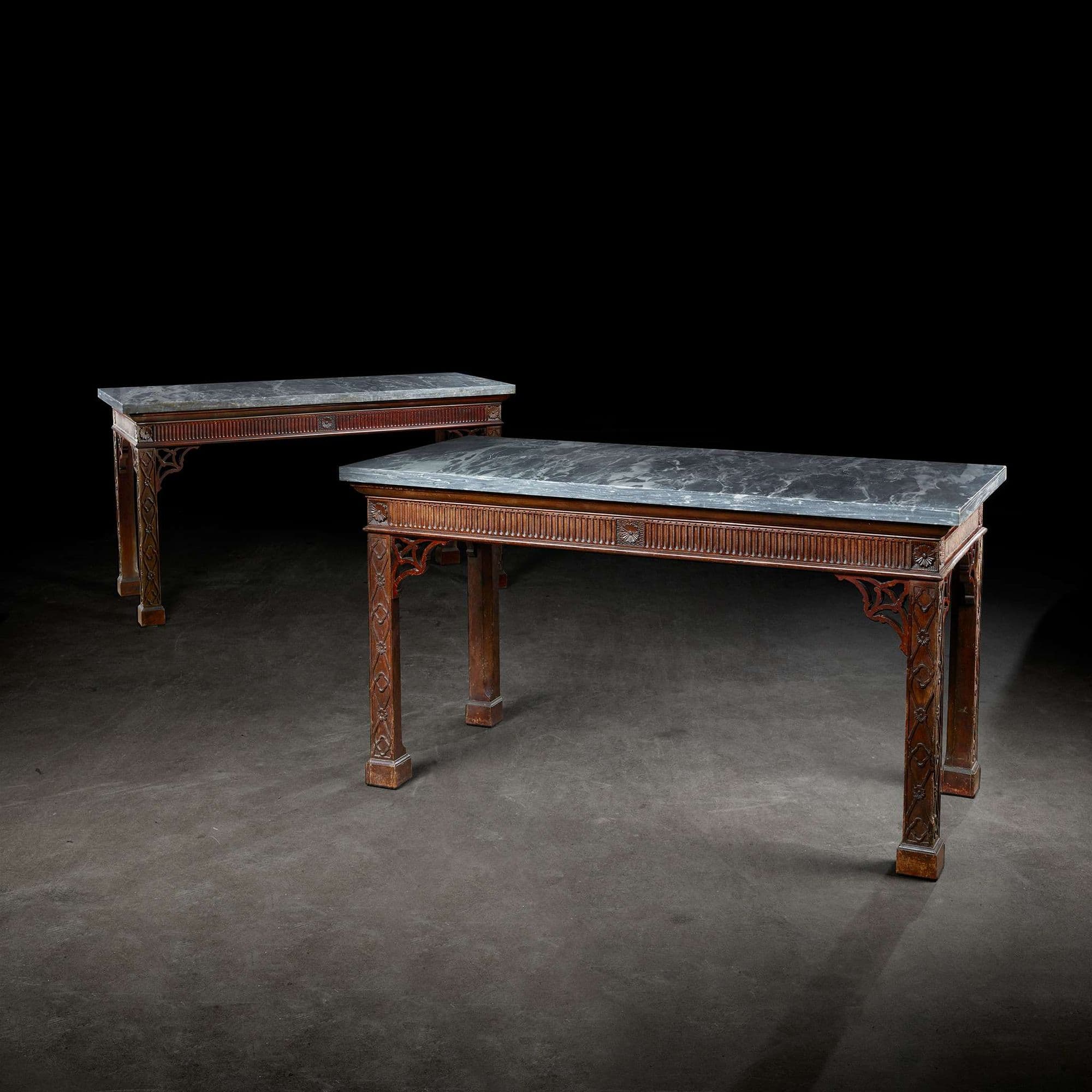
GEORGE III SIDE TABLES, ATTRIBUTED TO JAMES BLAIKIE
In 1764 John Baxter, the son of Penicuik House's architect John Baxter, senior, was sent to Rome by Sir James to study, and while there he was tasked with sourcing marble chimneypieces, slabs of marble for table tops, and advising on the selection of lifesize classical marble statuary to grace the interiors of Penicuik House whose decoration was carrying on apace. Correspondence between Sir James and the younger Baxter culminated in September 1767 when Sir James sent the final payment of £67 3s 9d 'which compleats the payt. of Chimnys, Statues and Tables of Leghorn'.
Sir John Clerk, 2nd Baronet (c1676-1755) was a Scottish lawyer, judge, politician, composer, antiquarian and patron of the arts, as well as a key figure in the Scottish Enlightenment. He was a leading supporter of the Act of Union, and sat in the first Parliament of Great Britain in 1707. He served as Baron of the Exchequer for Scotland for nearly fifty years. In the 1720s he built Mavisbank House, designed by William Adam and considered the finest Palladian villa in Scotland, on the Lasswade Estate purchased by his father. At Penicuik, he enclosed pastures, planted over six hundred thousand trees and was responsible for the designed landscape which survives largely unchanged today. At first he intended to make changes to Newbiggin to create a “very fine uniform house”, but came to the view that a large part of the building would need to be torn down to create the desired effect, so opted to leave the house as it was. He married Lady Margaret Stewart, eldest daughter of Alexander Stewart, 3rd Earl of Galloway, in 1701, but she sadly died in childbirth in the same year. Their son, also John, survived but died unmarried in 1722. Sir John married again, to Janet Inglis, daughter of Sir James Inglis of Cramond, 1st Baronet, and that marriage produced seven sons and six daughters.
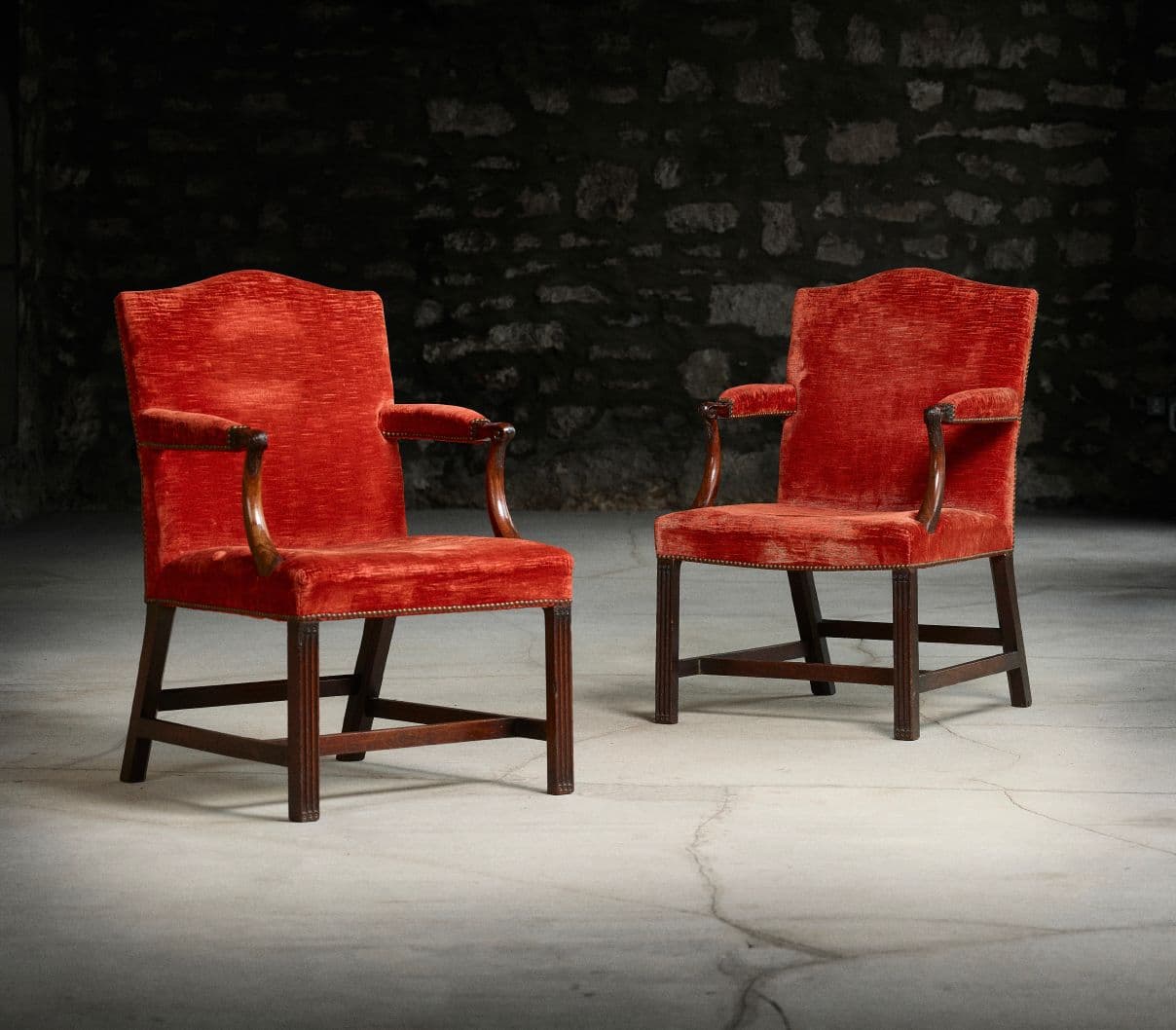
GEORGE III MAHOGANY OPEN ARMCHAIRS, POSSIBLY WILLIAM HAMILTON OF EDINBURGH
Much has been written about the celebrated suite of characteristically Scottish ‘Cockpen’ seat furniture from Penicuik House, commissioned by Sir James Clerk. While Sir James was meticulous in documenting the construction and furnishing of his new country house, his account journals can also be tryingly vague in identifying specific pieces with specific tradesmen. Speculation on the source of the ‘Cockpen’ furniture has led to the most probable maker, William Hamilton of Edinburgh, who can be linked to chairs of this type in other house collections of the period.
When Sir James Clerk, 3rd Baronet of Penicuik (1709-1783), inherited Penicuik Estate from his father Sir John, 2nd Baronet, in 1755, it was large and prosperous, with the Clerk family having been in ownership for a hundred years. Newbiggin was a rambling Scottish fortified tower house with origins in the 16th century if not earlier, and had undergone numerous alterations and expansions. Work was certainly done there throughout the 17th century and into the 18th in a continuing schedule of modernisation. Initially Sir James intended to further bring Newbiggin up to date, but perhaps inspired by the impetus for new stately country houses in the Lothians, or influenced by his time spent travelling and studying in Italy, he decided to build a new house at Penicuik. Working with architect John Baxter, and with advice from Robert and John Adam, Sir James designed the new Penicuik House, a symmetrical, ordered neo-Palladian country house, demolishing Newbiggin in 1761. Building continued from 1761 to 1776 with Sir James heavily involved in the decision-making, overseeing not only the construction but the interior decoration and furnishings. The design, rigid in its adherence to symmetry both on the exterior and interior, attracted some criticism for its outmoded approach, for example the lack of a central grand staircase, however Sir James was delighted with the result.
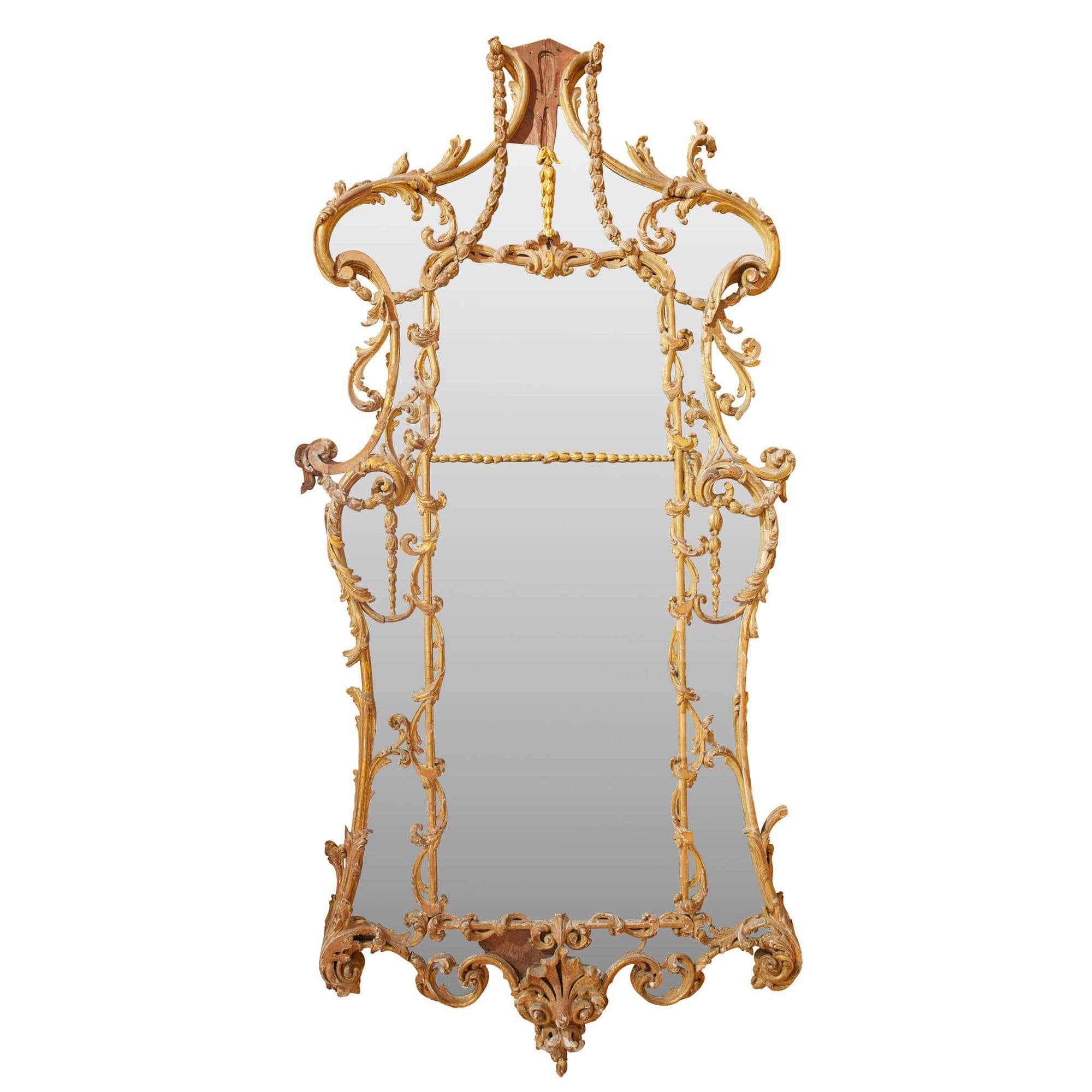
GEORGE III PIER MIRROR, BY JAMES THOMPSON OF EDINBURGH
The present lot, and the other pier mirror in the sale, lot 17, were made by the Edinburgh gilder and carver John Thomson and recorded in the Penicuik House ledgers in 1770. Thomson is also credited with supplying frames and mirrors to Arniston House for Robert Dundas, Hopetoun House for the Earl of Hopetoun, and Drumlanrig Castle for the Duke of Buccleuch.
Sir James employed, alongside architect John Baxter, James Blaikie as master carpenter on the project, who designed and made furniture to his patron’s specifications, or contracted other tradesmen to carry out work. Blaikie was a timber merchant and wright from Leith who must have impressed Sir James greatly; so much so that he was trusted to pay the accounts of other journeymen. In the account books dated from 1762 onwards, Blaikie was paid £968 6s 6 ¼d for his own work, and a further £660 6s 6 ½d for settling other tradesmen’s work. Sir James’ account book offers an interesting insight into the building and furnishing of a mid-18th century Georgian country house. He chose designs of his own liking and was not overly influenced by contemporary tastes and often bypassed the more well-known Edinburgh cabinetmakers and joiners. Although invoices for the supply of many pieces of furniture acquired by the Clerks survive in the family archive, it’s difficult to ascertain which other pieces were specifically made by Blaikie or his men, as Sir James’ account book often just lists amounts paid, however there are instances where some itemising takes place and these provide an engaging snapshot into the who and when of the furnishing of Penicuik House.
The most famous interior feature of the house was the Ossian Hall, its ceiling lavishly painted by the Scottish artist Alexander Runciman (1736-1785) to depict scenes from the recently published Poems of Ossian (1765). This key work by the Scottish poet James Macpherson was hugely influential in development of Romanticism, the concept of the ‘noble savage’, and the Gaelic Revival. That Sir James chose this subject, rather than classical scenes of antiquity, speaks of his position in celebrating a national and international Scottish identity. He wrote in his account book for the building of his new house “I own I have carryed extravagance to the highest pitch but can with trouth affirm my fortune … is better than it was when I first entered to it”, a testament to his financial prudence balanced against his desire to create a sumptuous country retreat.
The house was further extended in 1857 by Sir George Clerk, 6th Baronet, (1787-1867) to plans by the architect David Bryce, with the addition of large end blocks to house a library, larger reception rooms, and bedrooms necessary for Victorian house party entertaining.
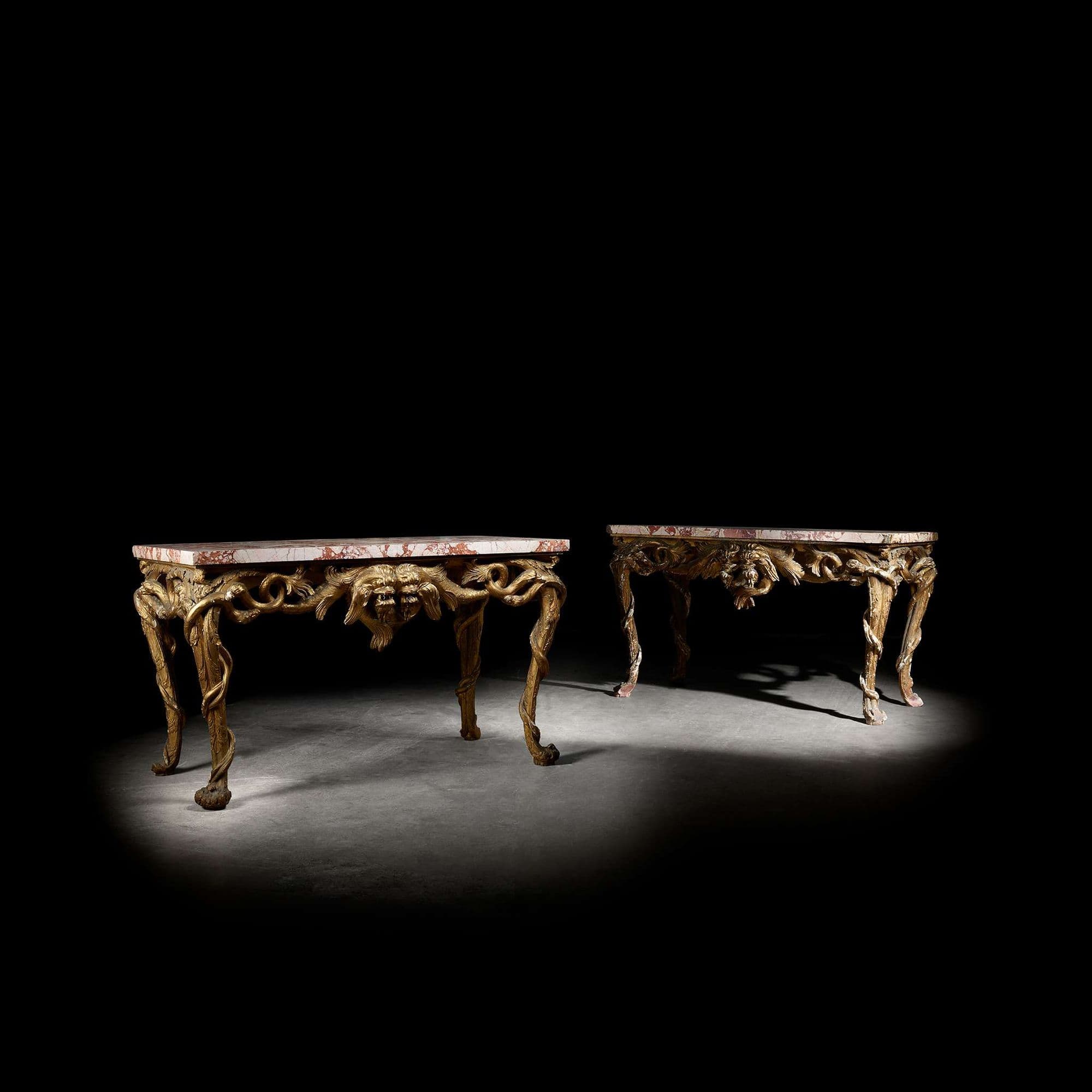
ITALIAN GILTWOOD AND BRECCE PERNICE MARBLE TOPPED SIDE TABLES
This remarkably lively pair of giltwood side tables, with their somewhat menacing dolphins or sea serpents, do not appear in the Penicuik papers or invoices, but were certainly saved from the fire in 1899, residing in the new Penicuik House since its conversion from a stable block. The impressively thick brecce pernice marble slabs may have been part of the shipment of marble slabs shipped from Rome in the late 1760s, arranged by John Baxter the Younger, son of Penicuiks chief architect John Baxter.
By the end of the 19th century, Sir George Clerk, 8th Baronet, (1852-1911) and his wife Lady Aymée, spent much of their time living elsewhere, leaving the house empty a great part of the year. The cost of maintaining and running a house of its size subsequently became a burden and suitable tenants were found, first being Lord Kinnear, and then the lawyer R.B. Ranken.
In June of 1899 calamity struck Penicuik House when a fire broke out in the attic and spread through the roof and upper floors. The slow-moving nature of the conflagration, which burned for days, allowed for a major rescue with Penicuik’s chattels pulled out of the smouldering house and deposited on the lawns. Sadly Runciman’s painted ceiling in the Ossian Hall was lost.
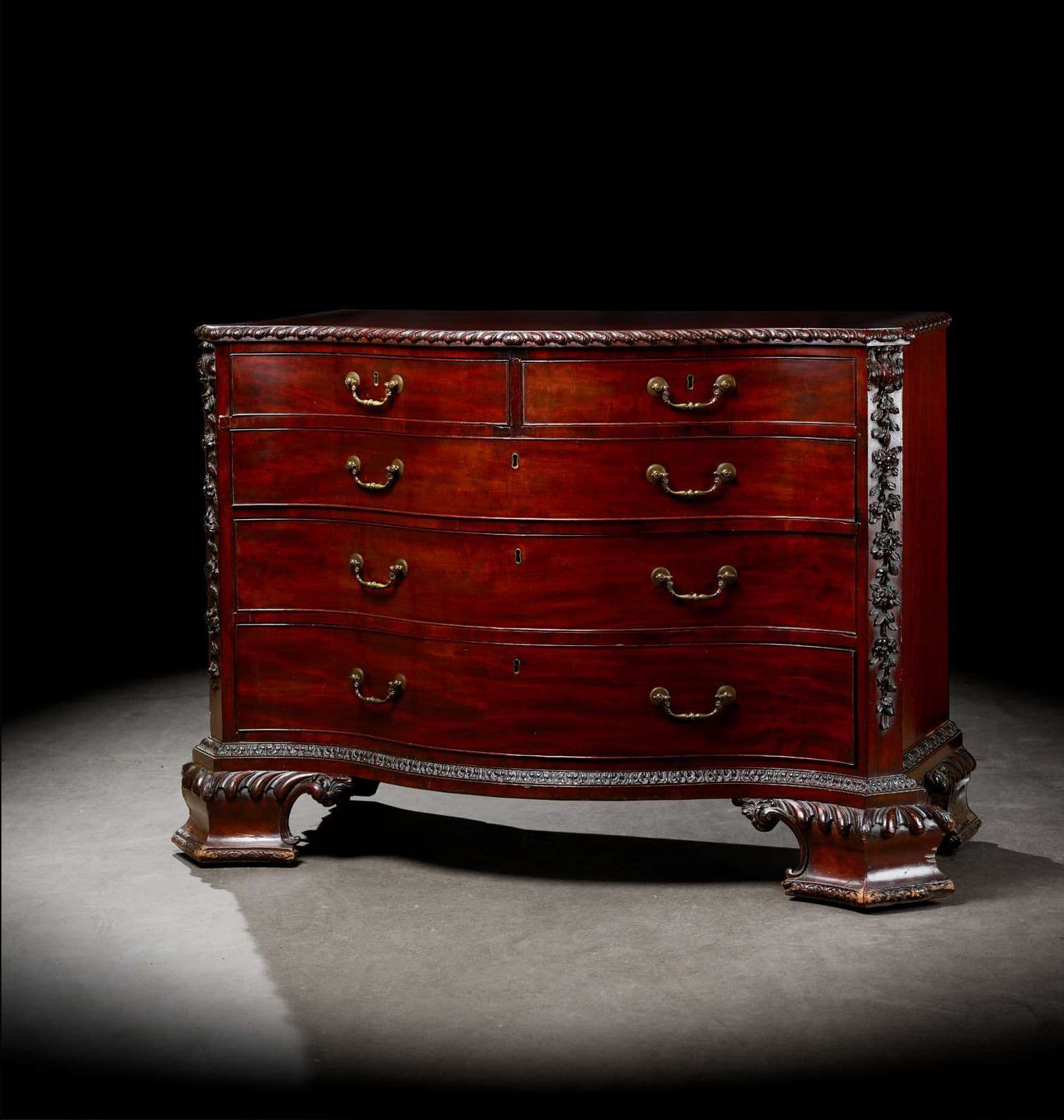
GEORGE III MAHOGANY SERPENTINE CHEST OF DRAWERS, ATTRIBUTED TO JAMES BLAIKIE
One of two chests of drawers supplied by James Blaikie to Penicuik House in 1769, and listed as a ‘half-Chest' in Sir James' journal. Blaikie, as the principle carpenter on the development of the Penicuik interiors and furniture, would have acted as agent and had the chest made by an Edinburgh cabinetmaker to his specifications.
Most of the original furniture and works of art were saved, but when difficulties with the insurers made it apparent the house could not be rebuilt, it was decided under the intuitive guidance of Lady Clerk to convert the adjacent Georgian stable block, which comprised a coach house, brew house, and bakery, as well as stables, into the main family home. Under the direction of architects Lessels & Taylor, by 1902 the work had finished and the ‘new’ Penicuik House was christened, creating one of the most unusual and charming private houses in Scotland. While Sir James Clerk’s 18th century vision of a Scottish country seat was gone, much of his furniture, paintings, and works of art lived on in the new location and provided a glimpse of some of the splendour originally achieved. The original Penicuik House, surviving as a consolidated ruin, remains as a very fine example of Scottish Palladian architecture.
Now a century and a quarter since the devastating fire, Penicuik Estate is changing and evolving once again. With a new generation taking over the running of the Estate, the family are embarking on an exciting new chapter, developing a fifty-year vision including the diversification of the business into leisure and hospitality. The current Penicuik House is now set to be converted to bring it up to date and to equip it for 21st-century living. As part of this modernisation process, and after taking considered stock of the contents, it became apparent that it wouldn’t be possible to retain everything in the new design. The family has now decided to offer some of the furniture and works of art for sale at auction with Lyon & Turnbull, with many pieces having been in the family for two and a half centuries. It is with great hope that new owners will enjoy these wonderful objects as much as they have been enjoyed by the Clerk family over the generations.
Illustrated top: Newbiggin, the 16th century castle originally built on the plot Penicuik House now occupies. Image from Memoirs of the life of Sir John Clerk of Penicuik, baronet, baron of the Exchequer, extracted by himself from his own journals, 1676-1755 (1892). Sir John Clerk said of Newbiggin, “It shows an aged and wrinkled brow.”; Penicuik House post 1857 when the wing blocks, designed by David Bryce, were added.
Illustrated middle: Photographs from family records showing the efforts to remove the contents of the house to the lawn before they could be consumed by the fire; The stables and coachhouse of the original Penicuik House, converted after the fire of 1899 into the ‘new’ Penicuik House where the Clerk family reside to this day.
Illustrated bottom: Penicuik House in 1782, prior to the David Bryce designed end blocks added in 1857. The stable block with its distinctive steeple can be seen on the far right. © RCAH\MS; The Drawing Room, New Penicuik House, showing lots 46, 47, 50, 53 and 54 in situ. Image © RCAH/MS

